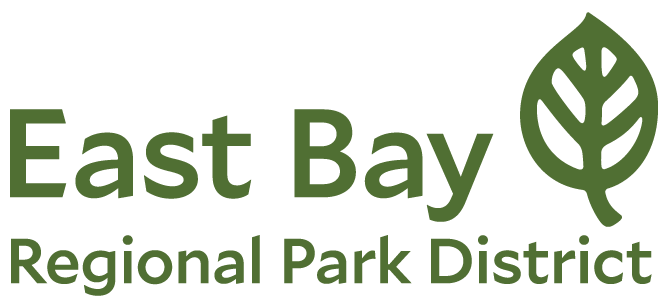Preparing for Wildfire | Preparing for Landslides/Floods
Our parks are located in beautiful open spaces near urban areas and residential developments. Living next to or near parks has the benefit of easy access to peaceful and calm areas of natural beauty. But living near wildlands can also bring challenges that are different from city dwelling. Living next to wildlands inherently comes with some risks related to natural conditions and the potential for greater impacts of natural disasters.
State law provides that public agencies like the Park District generally are not responsible for damage caused by natural conditions of unimproved public property like parklands. (See, for example, Government Code sections 831.2 and 831.25.) That means that neighbors living next to undeveloped parklands may want to take precautions to protect their property.
Find out some of the things that you can do to help protect your home and property from natural conditions and disasters.
Preparing Your Home & Property For Natural Disasters
Know what disasters and hazards could affect your area, how to get emergency alerts, and where you would go if you and your family need to evacuate. Make sure your family has a plan and practices it often.
- myhazards.caloes.ca.gov/ MyHazards is a tool for the general public to discover hazards in their area (earthquake, flood, fire, and tsunami) and learn steps to reduce personal risk.
- Emergency Alerts & Resources | Contra Costa County
- Emergency Alerts & Resources | Alameda County

Protecting Your Home From Wildfire
The geography, weather patterns and number of Wildland Urban Interface communities in California make it a state particularly threatened by devastating wildfire. Each year, the Park District’s Fire Department removes desiccated vegetation on thousands of acres of parkland to reduce fire danger. But private property owners have a critical role in fire safety as well. As catastrophic wildfires continue to increase each year in California, make sure to protect yourself and your family – plan, prepare and stay aware. Property owners and residents in areas most at risk are encouraged to take the steps in CAL FIRE “Ready, Set, Go!” to be ready for wildfire.
Defensible Space
See tips on Defensible Space from CAL FIRE, Defensible Space - Ready for Wildfire.
Defensible space is the buffer you create between a building on your property and the grass, trees, shrubs, or any wildland area that surround it. This space is needed to slow or stop the spread of wildfire and it helps protect your home from catching fire.
- Create and maintain the required 100 feet of Defensible Space on your own property.
- Cut or mow annual grass down to a maximum height of four inches or as required by your local Fire Department or Fire District.
- Ensure all combustible materials are located at least 30 feet away from your home.
Hardening Your Home
See tips on Home Hardening from CAL FIRE, Hardening Your Home - Ready for Wildfire.
Taking the necessary measures to harden (prepare) your home can help increase its likelihood of survival when wildfire strikes.
- Use or install fire ignition-resistant materials around your home.
- Remove vegetation or debris from your roof, vents, windows, deck and gutters.
- Inspect your home for dry rot, gaps or cracks. Caulk gaps greater than 1/8-inch.
Fire Smart Landscaping
See tips on Fire Smart Landscaping from CAL FIRE, Fire Smart Landscaping - Ready for Wildfire
A fire smart landscape isn’t necessarily the same thing as a well-maintained yard. This type of landscape uses fire-resistant plants that are strategically planted to resist the spread of fire to your home. Fire resistant plants are great in California because they are often drought tolerant, too.
Maintaining Overhanging Trees
If limbs or branches belonging to a park tree or bush extend over your property line, you are legally allowed to trim the areas hanging over your property. If you need to cross District land to access your property in order to do this work, please apply for an Access Permit.
East Bay Regional Park District Fire Department
For more safety advice and to find out how the East Bay Park District Fire Department works to create a landscape that is safe, healthy, resilient, and more resistant to the negative impacts of fire, visit the Fire Department.
Protecting Your Home From Landslides or Flooding
A landslide occurs when masses of rock, mud or debris move down a slope. When a wildfire burns a slope, it increases the chance of landslides for several years. Landslides occur in all U.S. states and territories and can be caused by many factors including earthquakes and storms. Many areas in the East Bay are naturally prone to landslides due to geologic conditions. Professional inspections, and proper design can reduce many landslide problems.
Consult a qualified geotechnical professional for advice on appropriate preventative measures for your home or business.
Know how to recognize warning signs and what you can do to protect yourself, your family and your property from the effects of a landslide or debris flow.
Additional Resources
- Landslides & Debris Flow (ready.gov)
- Floods (ready.gov)
- How to Prepare for a Flood and Minimize Losses (floodsmart.gov)

Contact Us - Public Safety
By Phone:
Emergency: Call 911 or 510-881-1121 from a cell phone, 24 hours a day
Business/Non-Emergency: 510-881-1833, 24 hours a day
General Park Information: 1-888-EBPARKS or 1-888-327-2757
In Person or by Mail:
Public Safety Headquarters
17930 Lake Chabot Road
Castro Valley, California 94546-1950

